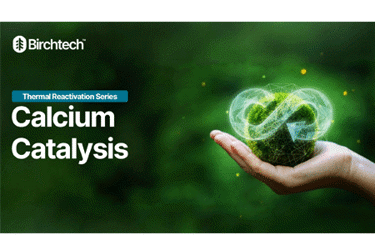Thermal Reactivation Series: Calcium Catalysis

Thermal reactivation of spent granular activated carbon (GAC) is a sustainable and cost-effective method for removing per- and polyfluoroalkyl substances (PFAS) from potable water. However, understanding the impact of pore size distribution on adsorption is crucial for water utilities aiming to optimize PFAS removal. GAC consists of millions of pores classified as micropores, mesopores, and macropores, with micro- and mesopores being the most effective for PFAS adsorption. Thermal reactivation can alter pore size distribution by widening micropores, which may enhance the adsorption of natural organic matter (NOM) but could also negatively affect PFAS removal efficiency. Additionally, repeated reactivation cycles may further change pore structure, making lab- and pilot-scale testing essential.
Another key consideration is calcium catalysis, an often-overlooked factor in thermal reactivation. Calcium, which naturally accumulates in GAC during water treatment, can accelerate the transfer of oxygen during reactivation, leading to an unwanted "drilling effect" that widens pores. While this is less of a concern for short service durations, prolonged use and multiple reactivations can lead to significant pore alterations, potentially reducing PFAS adsorption capacity.
To maximize efficiency, water utilities should evaluate calcium levels in raw water and assess GAC performance through rapid small-scale column testing (RSSCTs). Consulting experts in thermal reactivation and water quality can help utilities optimize GAC reuse, ensuring cost savings and regulatory compliance while minimizing environmental impact.
Get unlimited access to:
Enter your credentials below to log in. Not yet a member of Water Online? Subscribe today.
